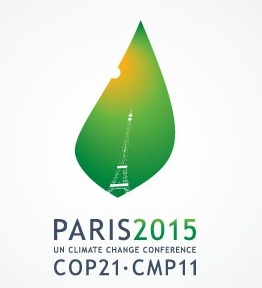-
How can you Predict Titanium Dioxide Prices?
 Continue Reading
Continue ReadingThere can be few chemicals as misunderstood or as little known about by the general public as Titanium Dioxide. Which is strange given that we are rarely more than three metres away from it at anytime in our lives.
It is an incredibly versatile chemical, that can be found in everything from paints to paper, sunscreen to plastic. And yet such is TiO2’s noteriety, that it is perhaps most famous for where it can’t be found, when media pressure against Dunkin Donuts, forced the snack producer to remove it as an ingredient. Such is the chemical’s usefullness that it had been added to the powered sugar, as CNN reported at the time, “to make the powdered sugar appear brighter”.
Yet what is strange again, is that a product that is so important for today’s consumerist world should have a price that fluctuates so greatly. This is especially true given that is has such widespread availability, sourced as it is from ilmenite, and has four well-established, big name producers, in Kronos Worldwide, DuPont, Cristal Global and Tronox Limited (plus a further host of smaller manufacturers). These big four, according to the International Business Times, “account for over 50 percent of the global net production volumes.”
Amongst a myriad of other reasons, in the past twenty years, prices have been held high by an increase in the use of sunscreen. Also having an effect was the increase in demand for Solar panels, a trend that is expected to continue. A view supported by market research consultants, Grand View Research, which stated that, “the mineral (TiO2) is expected to experience a rise in demand from the growing photovoltaic modules industry.”
Further price pressure has come from China, through its phenominal growth as a consumer of plastics, paints, paper and just about everything else.
Yet in the bizare world of Titanium Dioxide pricing, at the same time, China also caused downward price pressure. This was due to it’s construction boom that increased the demand for iron, thus increasing iron production. This in turn aided Titanium Dioxide production, as Paint and Coatings Magazine explains, “China’s imports of approximately half a million tonnes, while making up a large part of global demand, have declined in recent years. The reason for this is the prodigious rate at which Chinese miners are producing ilmenite. Much of the mineral is sourced from Sichuan province where it is found together with magnetite. The high iron ore prices that prevailed when the magnitude of China’s construction boom took everyone by surprise have allowed some of the larger Chinese miners to produce very low-cost ilmenite.”
Today, prices still fluctuate greatly. Analysis by market researchers CCM, shows that prices in China “have been rising steadily since March, with rutile TiO2 prices increasing 4.8% between late February and June 1, while anatase TiO2 prices rose 6% over the same period.”
Purchasers hope that prices have reached a peak, now that high prices have made production expansion more viable. So that there are a now a number of newly opened and pending manufacturers, including, as the International Business Times reports, “significant contributions from smaller producers in the near future (as well as) White Mountain Titanium Corp, which is expected to join global commerce in 2017, (and) is now gaining industry reputation for its works on the Cerro Blanco Property… a sprawling 17,041-hectare rutile deposit in Santiago, Chile owned by the company, (which) is expected to produce 112 million tonnes of rutile.”
Another reason why the price of Titanium Dioxide is expected to fall in the coming months is the decrease in paint production in China. As China’s National Bureau of Statistics states, “China’s output of coatings in April was down 5% year on year, mainly due to the slowdown in the real estate market – the total area of new housing projects under construction during January-April 2015 was down 17% on last year.”
Furthermore, sluggish demand from plastics producers, caused by low oil prices, is also making speculators foresee a TiO2 price drop. As CCM makes clear, “The plastics market is strongly influenced by oil prices, so if there is a sudden rise in global oil prices (this) will breathe new life into the market (for TiO2). However, at the moment the plastics market is not looking like a likely source of strong demand for TiO2.”
In the strange world of Titanium Dioxide, it is both its versatility and its widespread production that causes price fluctuations. Being so widely used, means that a fall or rise in the demand for paint, plastics, cars, houses, paper, sunscreen or solar panels, will all have an affect on price. Given that this is the case, it is possible that over-analysis of data from too many sources can result in inaccurate predictions.
At present, many analysts expect prices to start a downward trend, but it is a keen trader who would bet the farm on that! Instead, buyers and sellers must be open-minded when it comes to future prices and possibly accept fluctuations as part of the weird world that is Titanium Dioxide.
-
What turns a Good Recycling Process into a Great Recycling Process?
 Continue Reading
Continue ReadingThe chemicals industry faces a great many challenges in the coming decades. Primarily it must meet the demands of an ever expanding and demanding consumer base, but each region faces its own problems.
In the Far East it must manage an incredible rate of growth whilst keeping environmental damage to a minimum. In Europe it is struggling to maintain growth and absorb rising energy costs. Chemical producers in the Middle East are concerned about political stability, whilst in Russia they are having to do business in the face of a trade embargo with the West. Africa, whilst rich in materials has numerous challenges with political stability, corruption, infrastructure and technological know-how. Perhaps only in the Americas is the chemical industry well set for the future, although it is connected to the regions banking system that some predict will self-destruct within our lifetimes.
As a whole, the industry is facing one single problem: a dwindling supply of raw materials. The planet contains only a fixed amount of resources, and as world population has grown and standards of living rise, the demand for consumer products has increased immeasurably. The chemical industry is trying to keep up with this pace, and in general is meeting demands, but longer term, more sustainable solutions are needed, as there is only so much of any single raw material that can be produced.
For example, intelligent processes for the creation of better plastics from less oil, still require oil. Whilst those employing maize or corn oil have to compete with buyers of those products for animal or human consumption.
Now, step forward Czech chemistry to contribute to solving the problem of world demand for plastics from everyday household waste. For a revolutionary biotechnology firm from the Czech Republic has developed a process that can transform waste cooking oil into a biopolymer suitable for packaging, based as it is on PHA (polyhydroxyalkanoates).
Contracts have now been signed for the construction of the first production plant, which is to be based in China, where unsurprisingly, overcrowded cities have a problem with disposing of old cooking oil.
The polymer that will be produced will be a feedstock for bioplastic products, for the manufacture of fresh food containers and cups. Additionally, these are environmentally friendly as they self-disintergrate unaided.
The technology involved, among other things, won a prize for the “2015 Frost and Sullivan Technology Innovation Award” in London. It is part of a cooperation project between the EU and China and has already undergone successful pilot trials.
If the chemical industry is to meet the demands of world population and at the same time, avoid the destruction of the planet, then a vast array of similar ideas and projects need to be developed. The chemical industry can thrive in the future, but only if investment and a level of risk taking also thrives. Maybe then it can turn good recycling processes into great ones.
-
The United Nations Climate Change Conference – Paris 2015
 Continue Reading
Continue ReadingWhen the Kyoto Protocol came into force in 2005, it was felt that a new dawn had begun, not because the rest of the world realised it could act without American support, but because it saw the birth of carbon emissions trading. For the first time ever, nations agreed to reduce greenhouse gas production, and agreed on a number of 5.2% in the years 2008 – 2012.
As a whole, this target was met, if only due to the financial crisis and subsequent slowing down of the world economy. However it is less clear if individuals like China, who saw massive growth, managed to maintain a grip on their coal burning, or even if the EU was able to stay within their limits.
Still, the global impact of Kyoto was huge, if nothing else but for the sense of a planet acting as an (almost) whole to tackle a planetary problem. A spirit of unity that it is hoped will still be felt at the next round of talks in Paris, at the UN Climate Change conference due in December 2015. Which, as it is the 21st conference of its kind, environmentalists would like to see the negotiations come of age, and secure a legally binding commitment to limit global temperature rise to 2°C.
Optimists hope that this commitment will accelerate the introduction of advanced technologies and facilitate the exchange of information between regions industrial sectors. Pessimists point to the fact that during preliminary talks in Marseilles earlier in June of this year, countries declared their processes for reduction of greenhouse gases but without being clear whether or not those steps were sufficient to limit the global temperature rise to the required 2°C.
Realists hope that the summit will allow for the implementation of Proportional Carbon Pricing. This newer system is a development of emissions trading that takes into consideration areas with lower industrial activity. Also possible is the summit’s ability to find mechanisms for reducing energy consumption and a gradual switching towards renewable energy and energy efficient storage. Although this is mainly a question of optimal investment in technology and pilot projects, to allow a rapid decrease in development costs.
Ultimately, the question of which direction emissions trading or carbon pricing takes it still unanswered. Whether it is adapted on a mutually agreeable platform, enforced on smaller, developing regions by political and economic powerhouses or abandoned altogether is yet to be known.
